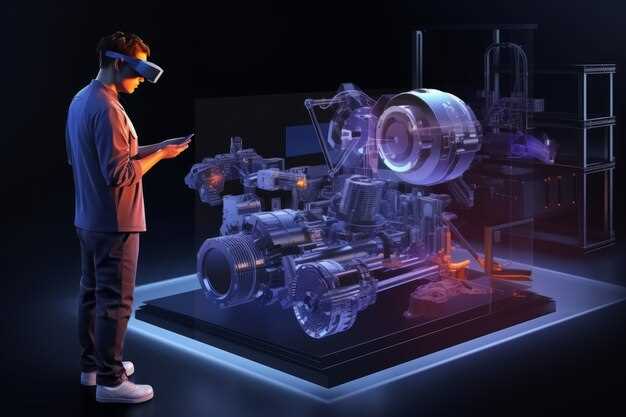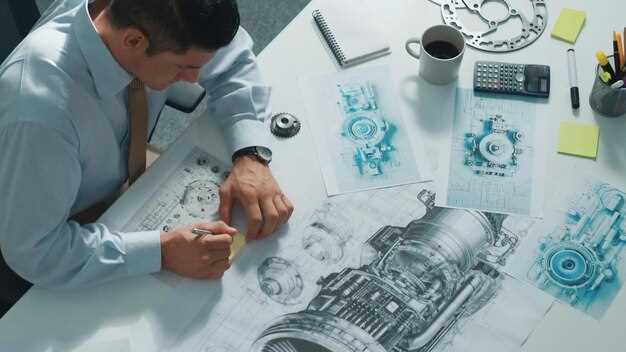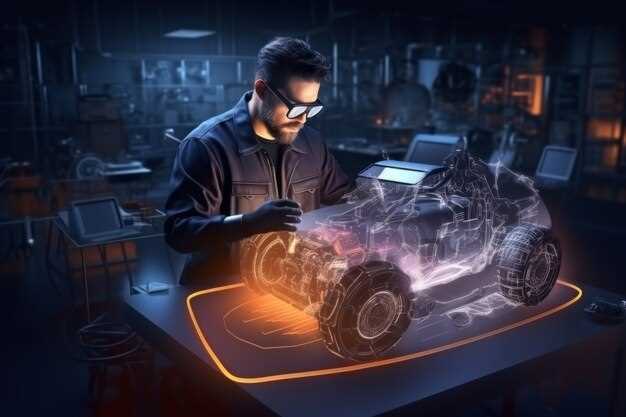

When it comes to enhancing the power of a vehicle, the heart lies within the engine. A high performance engine not only increases horsepower, but also improves overall driving dynamics, responsiveness, and reliability. Understanding the intricate components and processes involved in engine building is essential for any automotive enthusiast or professional looking to achieve optimal performance.
Each step in the engine-building process plays a critical role in maximizing efficiency and power output. From selecting the right components, such as pistons and camshafts, to precise assembly techniques, the journey to creating a powerful engine requires attention to detail and a wealth of knowledge. In this guide, we will explore the essential phases of building a high performance engine, providing insights that will help you unlock the full potential of your machine.
Whether you are a seasoned mechanic or a novice eager to learn, understanding how to systematically approach engine building can demystify the process and lead to impressive results. Join us as we delve into the core principles and practical steps that will guide you through transforming a standard engine into a powerhouse of horsepower and torque, ensuring your vehicle stands out on the road or racetrack.
Choosing the Right Components for Maximum Horsepower

When building a high-performance engine, selecting the right components is crucial for maximizing horsepower. Each part plays a significant role in the engine’s overall efficiency and power output. Understanding the functions of these components will guide enthusiasts in making informed choices.
First and foremost, the engine block and cylinder head must be compatible and designed for performance. A lightweight aluminum engine block can enhance weight-to-power ratio, while a well-designed cylinder head with larger ports allows for better airflow, contributing to improved combustion and horsepower. Look for heads that feature advanced technologies like CNC machining for optimal precision.
Next, consider the engine’s displacement. Increasing the cubic inches of the engine allows for more air and fuel intake, which translates to greater power potential. This can be achieved through bore and stroke modifications or by using a larger engine from the outset. However, balance the gains in displacement with the desired application to avoid unnecessary compromises in reliability.
Selecting the right camshaft is another critical step. The cam profile dictates how air and fuel enter the engine and how exhaust gases exit. Opt for a camshaft that aligns with your horsepower goals; a cam with a higher lift and longer duration can significantly boost power at higher RPMs, but may sacrifice low-end torque.
Fueling components, including injectors and fuel pumps, must be upgraded to match the increased demand for fuel. High-flow injectors will ensure adequate fuel delivery, while a performance fuel pump will maintain proper pressure. A well-tuned fuel system supports optimal combustion, maximizing horsepower.
Exhaust systems also play a vital role in horsepower development. High-performance headers and free-flowing exhaust pipes reduce back pressure, allowing exhaust gases to exit more efficiently. This enhancement improves engine breathing and, in turn, raises horsepower output.
Lastly, don’t overlook the importance of tuning and engine management systems. A powerful engine is only as good as its tuning. An advanced ECU (Engine Control Unit) can optimize fuel maps, ignition timing, and other critical parameters to ensure that all components work harmoniously, leading to maximum horsepower.
In summary, choosing the right components is essential when building a high-performance engine aimed at maximizing horsepower. Each part must be carefully selected and synergize with other components to unleash the engine’s true potential. A thoughtful approach to component selection will lead to an engine that not only produces impressive horsepower but also operates reliably in various conditions.
Precision Assembly Techniques to Enhance Performance
Assembling a high-performance engine requires meticulous attention to detail, as even minor discrepancies can significantly affect horsepower output. Precision assembly techniques ensure that each component functions optimally, leading to improved engine performance and longevity.
One of the fundamental aspects of precision assembly is the use of proper torque specifications when fastening components. Over-torquing or under-torquing can lead to issues such as gasket failure or increased friction, both of which detract from overall engine efficiency. Utilizing a calibrated torque wrench and following the manufacturer’s specifications is essential in maintaining uniform pressure across engine components.
Another critical technique is ensuring that all parts are cleaned thoroughly before assembly. Contaminants, such as dirt or oil residues, can interfere with the sealing surfaces of gaskets and bearings, leading to leaks or increased wear. Employing a systematic cleaning process, including the use of solvent and ultrasonic cleaners, can dramatically improve the reliability and performance of the engine.
Proper alignment of components is also vital in precision assembly. Misalignment can cause premature wear and inefficiencies in power transfer. Using dial indicators and alignment fixtures during assembly allows for accurate positioning of critical parts, such as crankshafts and camshafts, ensuring that the engine operates smoothly and efficiently.
Incorporating high-quality fasteners specifically designed for automotive applications contributes to enhanced performance as well. Fasteners that are made from premium materials and engineered for strength and durability minimize the risk of failure under high-stress conditions, thus maximizing engine reliability and horsepower.
Finally, utilizing thread-locking compounds can help secure bolts and screws, reducing the likelihood of loosening due to vibration. This simple yet effective technique contributes to maintaining consistent engine performance over time. By implementing these precision assembly techniques, builders can significantly enhance the power output and efficiency of any engine, translating into greater horsepower and an exhilarating driving experience.
Tuning and Testing Your Engine for Optimal Output

Tuning and testing your engine is crucial for achieving the maximum horsepower and efficiency. A well-tuned engine not only performs better but also lasts longer. To begin this process, you’ll need to gather the right tools, including a dynamometer, tuning software, and a wideband oxygen sensor for accurate measurements.
Start with Fuel Mapping: One of the first steps in tuning your engine is adjusting the fuel map. The air-fuel mixture needs to be optimized for performance. A richer mixture may produce more power but can lead to incomplete combustion, while a lean mixture can improve fuel economy but could also result in knocking. Use a wideband oxygen sensor to monitor air-fuel ratios throughout different RPMs for precise adjustments.
Ignition Timing Adjustment: Proper ignition timing is vital for maximizing horsepower. Advancing the ignition timing can lead to increased power, but it’s essential to find the right balance to prevent engine knock. Use a dynamometer to monitor horsepower output while making incremental changes to the ignition timing.
Boost Control (For Turbocharged Engines): If your engine is turbocharged, controlling boost levels is essential. Increasing boost can enhance horsepower significantly. However, ensure that the engine can handle the extra pressure without causing damage. Use tuning software to set appropriate boost levels and adjust wastegate settings accordingly.
Testing for Performance: After tuning, it’s vital to conduct thorough testing. Use a dynamometer to measure horsepower and torque output. Compare your results with previous runs to determine the effectiveness of your tuning. Testing should also include road tests under varying conditions to evaluate engine responsiveness and drivability.
Monitoring Engine Health: Continuous monitoring after tuning is essential to ensure that your engine performs optimally over time. Regularly check parameters like oil temperature, coolant temperature, and fuel pressure. Any significant deviations may indicate tuning issues or potential engine problems.
Fine-Tuning Adjustments: After initial tests, fine-tuning may be necessary. This could involve minor adjustments to the fuel map, ignition timing, or boost levels based on the data collected during testing. Remember that engine environments can change, so periodic reevaluation of your tuning is key for sustained performance.
In conclusion, tuning and testing your engine is a meticulous process that requires careful attention to detail. By optimizing fuel and ignition settings, controlling boost levels, and conducting thorough performance tests, you can achieve the desired horsepower and ensure the longevity of your engine.







